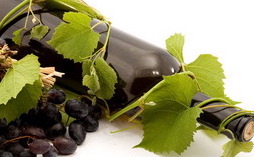|
Wine Myths and Baloney.Wine myths are a thriving industry. Any self appointed expert can pontificate about wine shoulds and shoudn'ts (including myself, I guess!). And many of us, who are not as knowledgeable as these experts, tend to fall for legends that have been making the rounds for years. Part of our wine education includes knowing when someone is serving a large helping of baloney along with the wine. Here are a few wine myths that have little validity. Myth 1 The pricier the wine the better the quality. Probably the greatest of all wine myths, the answer is No. What you pay for the wine doesn't always have a lot to do with its quality. The price reflects several factors. One is how many cases of that particular wine were made. It is possible that if a small quantity of the wine was made, it is because it was made with the best quality of grapes, and great care was taken in the production process, which would indicate quality. But that is not necessarily so, if there is a small quantity of wine, it could be that there was severe damage and few grapes survived. The price of the wine reflects many factors, including how much the producer spent on marketing this particular wine, which has nothing to do with quality. Myth 2 The "legs" or "tears" reflect the quality of the wine No. the legs or tears are the droplets of wine that slide down the side of the glass after you swirl it around. These tracks reflect the amount of alcohol in the wine along with other factors, but have nothing to do with quality. Myth 3 The older the wine, the better. No. It is true that some wines need to age, some red wines are in this category, but for the most part the older the wine the higher the probability that you have a nice bottle of vinegar. Perhaps the myth comes from numerous sayings and quotes to the tune of "People, like wine, get better with age" or something to that effect, which is also a questionable myth. If you don't believe me just ask my 98 year old aunt, who is sharp as a tack but has trouble walking and the doctor forbids her from drinking wine because it interferes with some of her medications. My personal opinion is; heck,if I were 98 years old I would drink the wine, at 98 I don't think that I would have a lot to lose!
Myth 4 A wine with a screw cap is a cheap wine Actually there are wineries who use screw caps for their best wines because they do not want to risk the wine being ruined by a bad cork. So the answer is, no; you don't have to use a screw capped bottle in conjunction with a brown bag. 
Myth 5 Smelling the cork will tell you a lot about the quality of the wine. That is another one of those pesky wine myths. No, smelling the cork will tell you more about the quality of the cork. It can tell you if the cork is moldy, or if it is breaking up. Of course, if the cork is in bad shape, the wine in the bottle will not be in the best of circumstances either, but that is another issue. Myth 6 Always drink white wine with fish and red wine with meat Not necessarily; like so many things in life, it depends. Yes, often white wine and fish go very well together. But a few, such as salmon, pairs very nicely with a red like Pinot Noir. The most important factor about this myth is your own taste. Eat what you like, and pair it with whatever wine you like. It is your meal. If you decide to strike out on your own, you are absolutely free to do so.
Myth 7 The points awarded to a wine are very important Only if you like that wine. If you hate Cabernet Sauvignon, it doesn't matter that it scored 99 on someone's list of great wines, you still dislike it. And along those lines, those 99 points are someone's opinion of the wine, not necessarily everyone's opinion. Granted, the opinion may be of an expert with the best palate in the world, but it still is only a person's opinion, there is no scientific method of awarding points yet. Myth 8 If it says "reserve" on the bottle, it must be a great wine No, reserve has no particular meaning. It means whatever the winemaker wants it to mean. It could mean that the winemaker wants more money for the bottle, but it says much about the quality of the wine.
Myth 9 Wines improve with age Along the lines of myth three, some wines are meant to age a few years before being consumed, other are not. But if you start out with a bad wine, in a few years you will have a bad old wine. No amount of aging will improve a bad quality wine. Myth 10 The vintage of the wine is very important Only in some parts of the world. In some wine regions the vintage matters, in others it isn't so important. If the wine comes from an area that has a great variation in climate from year to year, then the vintage could be very important. But if the wine comes from a place that has little variation in weather, such as California or Australia, the vintage doesn't tell you as much. Wine Myths Debunked as Part of Wine 101!
Back to Wine Education from Wine Myths Back to Home Page from Wine Myths
|






